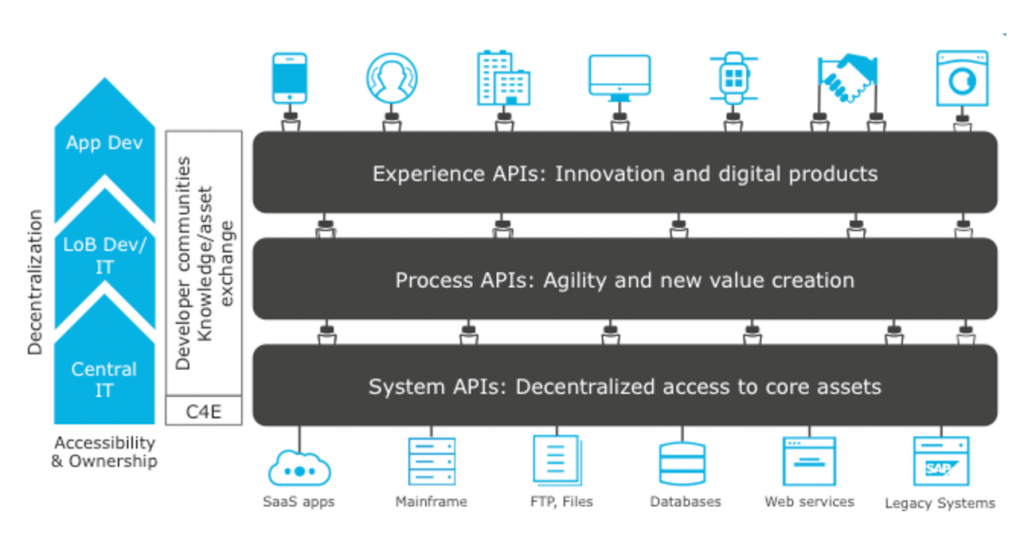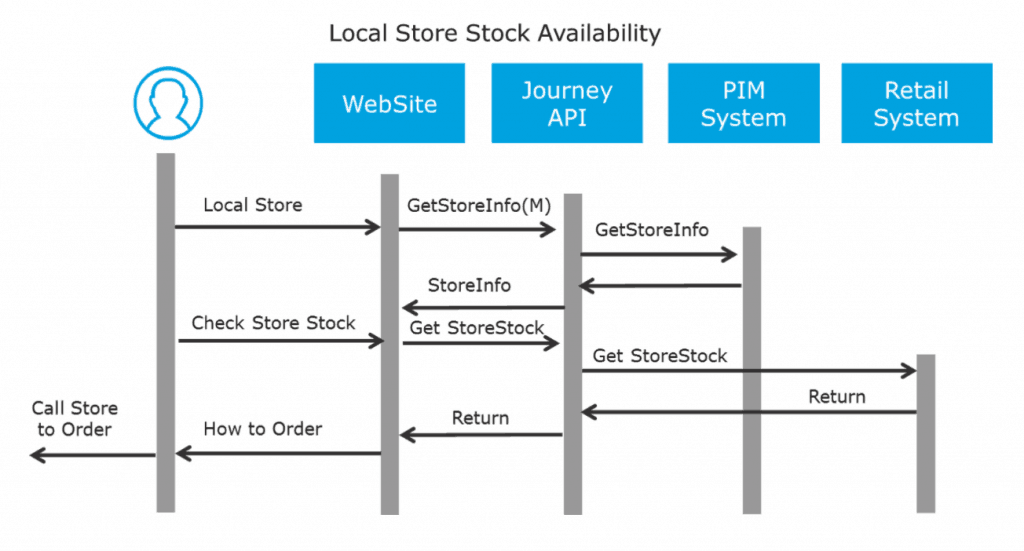Working with MuleSoft retail customers as a strategic architect across EMEA, I am seeing that for major retailers, the rise of eCommerce has been both a massive opportunity and a threat. The rise of the smartphone and the changing expectations of modern shoppers is forcing an evolution in how retailers do business.
Over the last decade, it has been standard for traditional retailers to respond by adopting some level of eCommerce capability, whether it’s flagship eCommerce platforms like the ones M&S and Burberry have created, or whether it’s ”mom and pop” stores having micro-sites hosted within Amazon. This flattening of the retail marketplace and the continued challenge of eCommerce retailers is forcing “traditional” brick and mortar retailers to think about what their core values are and what they have to offer the customer beyond an item and price.
The retail schism
Today most retailers have an internal schism between the physical store and their eCommerce sites. This split is not just a matter of the route to market for their products, but gets to the very heart of what the customer will get out of the shopping experience. For example, it affects how returning customers get appropriately personalized goods, or how staff is enabled, and how retailers manage, store, and display the physical stock. This schism is also reflected in the IT landscape.
Often, different teams manage and support system landscapes with completely different IT strategies and cultures.
The traditional landscape often is a complex mixture of technologies and systems often operated in in ITIL/Waterfall project culture, while the eCommerce teams are often cloud first, using agile strategies and often CI/CD DevOps tooling. This is not a great recipe for providing a consistent, positive shopping experience.
Breaking down the barriers
Research from Accenture shows that customers are now expecting more than a transactional relationship with retailers. They are expecting to build a relationship across channels. There are more touchpoints for customer interaction, so retailers need to create a seamless experience across all of them. Therefore, the business needs to eliminate the separation between the brick and mortar technology landscape and the eCommerce technology landscape as much as possible.
Critically for the industry, customers are creating their own shopping journeys; browsing and research start off via social platforms, then customers often go to the eCommerce sites for pricing and more focused information. Then, in some cases, they go to the store to see the physical product, and then they get delivery or pickup as needed. IDC notes that these customers that are shopping across channels spend 30% more than those that only use one channel. Leading retailers now realize that they need to support many dynamic journeys that will touch different channels at different times based on the class of shopper — which is not based on the traditional segmentation — and what mode they are in.
Multichannel shopping’s impact on IT
This shift is forcing IT directors to adopt new strategies to support the business because they need to cope with this challenge. Those strategies are often either modern Agile software development practices introduced into the traditional IT organization, or the eCommerce team is being merged into the central team to support a bi-modal delivery capability. These changes drive a fundamental change in how IT has to think about access and integration of core retail systems, as these strategies by necessity must be much more fluid. They cross many different interactions, not just with the customer, but also with store staff and management who will need richer and deeper access into data and capability that was previously needed.
API-driven Retail
At this point, integration of systems becomes a strategic business decision, not simply an IT one. For retailers to be able to provide the seamless customer experience across channels and truly serve the multichannel customers, all the organization’s systems need to connect to one another.
Through the adoption of API-led connectivity strategies leading retailers such as GANT, House of Fraser and Ralph Lauren are evolving their retail landscapes so that traditional retail capabilities can now be combined with modern cloud-based platforms. These retailers have developed agile layers of APIs that allow the rapid, scalable and critically secure core and new systems and technologies.
These agile layers of APIs provide an approach for connecting and exposing assets. With this approach, rather than connecting things point-to-point, assets can be composed and recomposed to create new products, data sources, and services very easily.
A good example of how API-led connectivity can make the path to multichannel retailing easy is something we often see; the Sales/Marketing teams at a retailer might want to enrich a customer’s journey more and more, but this then requires a deeper integration into core systems. For example, a global clothing retailer we work with didn’t want to lose potential shoppers if a particular item was out of stock online. They wanted to be able to offer information on where a product can be bought if it’s not available on-line. Using their API-led infrastructure, this is how the project was accomplished:
In this case, the use of the Experience API allows a simplification of interaction for the Web Channel, the complexity of the backend systems are also not exposed. This API can also be used to support other channels with minimum refactoring. As new requirements are developed new Process APIs could be created in this scenario to replace the call store to become a hold/reserve stock in store, this might need complex integration with store systems and include the creation and management of a pickup key. This API can this in be easily consumed by the Experience API as a new Ver without disturbing other channels.
This has also driven the acceptance that connectivity is no longer the purview of central IT but has to go from the core to the digital edge of the organization; marketing teams, mobile developers, and even in-store shoppers need to be able to consume data in a self-service, zero support manner.
This shift can go further with new API-driven extended supply chains that allow the entire retail network to share key data in real-time to react to new opportunities, threats or challenges. An API-led strategy supports the shift to accommodate the changes the digital revolution has brought about, but allow capabilities to be isolated and replaceable as well as balance cost and risk effectiveness to drive measurable business success.
Our team is looking forward to Retail Week Live to further the discussion, where we will be sharing our new book on digital transformation in retail. If you want to arrange a meeting with our team, please get in touch at info@mulesoft.com.











